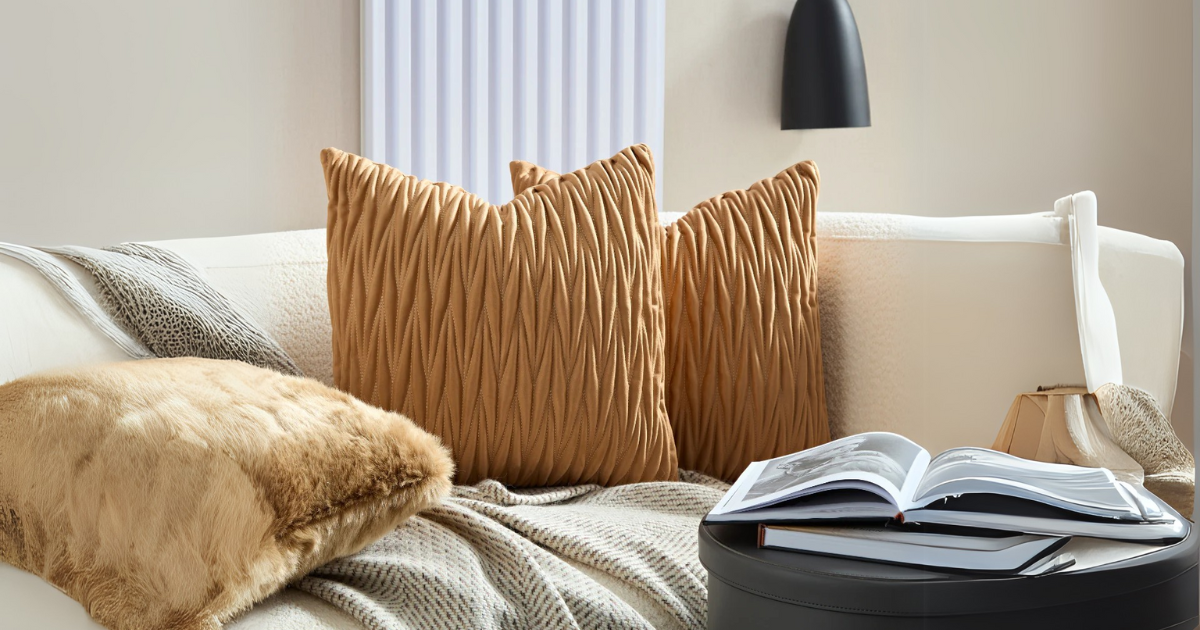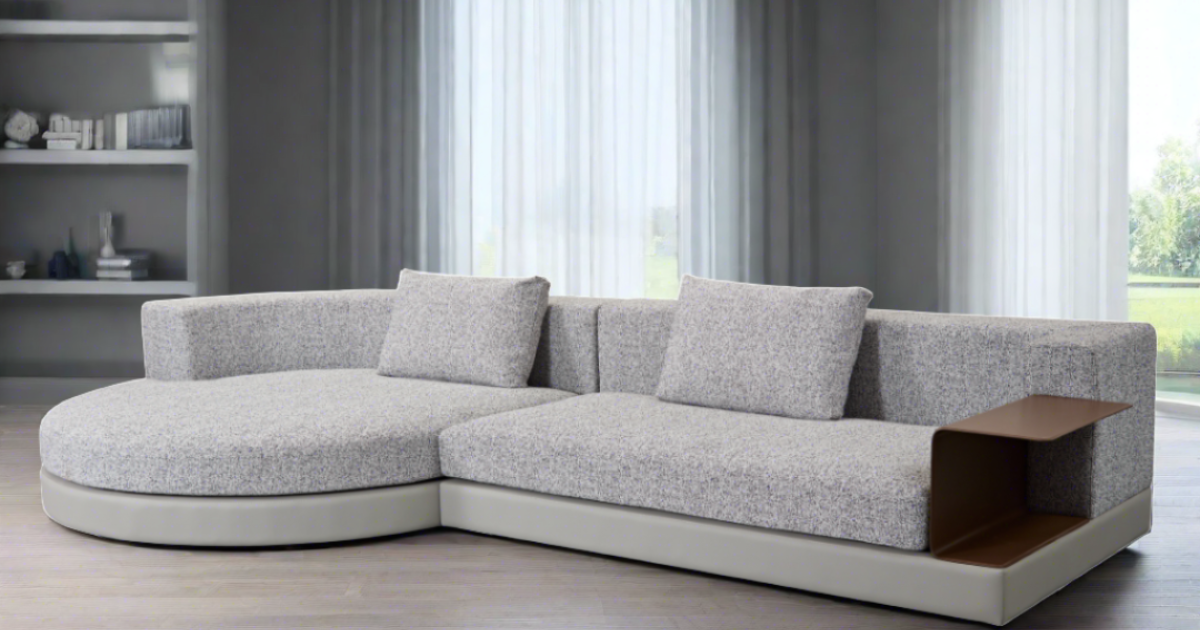In contemporary furniture design, modular sofas are celebrated for their unparalleled adaptability and innate style. But their story transcends mere aesthetics and comfort. For the astute business owner, delving into the historical evolution of the modular sofa unveils a deeper understanding of its enduring relevance in today's ever-evolving commercial spaces.
Imagine a piece of furniture that seamlessly adapts to the changing needs of your business, effortlessly reconfiguring to accommodate intimate meetings, large gatherings, or even a casual lounge area. This is the essence of the modular sofa, a concept rooted in centuries of design innovation.
Join us as we embark on a captivating journey through time, tracing the fascinating evolution of this remarkable furniture piece, from its unexpected origins to the cutting-edge designs that elevate modern businesses.
Early Influences: Breaking the Mold
While modular design may appear to be a recent innovation, its underlying principles have existed for centuries. Ancient civilisations, renowned for their advanced understanding of spatial design, integrated modularity into their architecture and rudimentary furniture. Consider the Egyptians' use of uniform blocks in their monumental pyramids or the Romans' interlocking brickwork. These examples demonstrate an innate human tendency towards adaptable, reusable components – a concept that would eventually shape furniture design.
A more direct precursor to the modern modular sofa emerged in the mid-19th century. During this era, furniture makers began experimenting with sectional seating, diverging from the traditional, single-piece sofa design. This shift was partly fueled by evolving social norms and the rise of larger, more ornate Victorian homes that demanded furniture capable of accommodating larger gatherings. Although less flexible than their modern counterparts, these early sectional sofas paved the way for the modular revolution.
The Rise of Modernism: Embracing Flexibility
The mid-20th century Modernism movement marked a pivotal moment in the evolution of modular sofas. This era, characterised by a rejection of excessive ornamentation and an emphasis on functional design, provided the ideal environment for the modular sofa's ascent. Visionary designers like Harvey Probber celebrated for his innovative approach to sectional seating, and the renowned duo Charles and Ray Eames, champions of functionality and adaptability, spearheaded this movement.
The Modernist philosophy, focusing on clean lines, minimalist aesthetics, and open-plan living spaces, created the perfect setting for the modular sofa to thrive. These customisable sofas, capable of adapting to various room layouts and accommodating changing needs, became synonymous with modern living. They offered a practical and stylish solution for the evolving homes and lifestyles of the mid-20th century.
Key Characteristics of Mid-Century Modular Sofas:
To truly understand why mid-century modular sofas remain a compelling choice for design-conscious business owners, let's explore their defining characteristics:
Low Profiles: These sofas often feature low-to-the-ground designs, which create a sense of spaciousness and visual lightness, particularly desirable in business settings like reception areas or lounges where an open and inviting atmosphere is key. This design element can make even compact spaces feel more expansive and welcoming to clients and guests.
Geometric Shapes: The modular units typically comprised simple geometric shapes like squares and rectangles, sometimes incorporating elegant curves. This modularity allows for endless configurations, enabling businesses to customise their seating arrangements to suit their specific spatial needs and aesthetic preferences. A modular sofa can be reconfigured to accommodate a small meeting area one day and a larger gathering the next, offering unparalleled flexibility for businesses.
Tufted Cushions: Tufted cushions were a popular design element, adding depth and visual interest to the otherwise clean lines of these sofas. This subtle detail can enhance the sophistication of a business setting, conveying a sense of timeless elegance and attention to detail.
Organic Materials: Mid-century modular sofas often showcased organic materials like wood, leather, and wool. These high-quality materials not only exude a sense of luxury and sophistication but also offer durability, making them a wise investment for businesses seeking long-lasting furniture solutions. Using natural materials can also contribute to a more sustainable and eco-conscious business image.
Evolution and Beyond:
The modular sofa's journey didn't end with the mid-century era. It continued to evolve, adapting to changing tastes and trends:
The 1970s: This decade infused modular sofas with bold colours and patterns, reflecting a more vibrant and expressive design sensibility. These retro-inspired designs can be a striking option for businesses seeking to make a statement or create a more energetic atmosphere.
The 1980s: Oversized, plush designs took centre stage, offering a more relaxed and indulgent seating experience. These generously proportioned sofas can be ideal for businesses prioritising comfort and creating a more casual and inviting environment.
- Today: Modular sofas have reached peak versatility. We see various styles, materials, and configurations catering to every taste and living space. This diversity allows businesses to select modular sofas that seamlessly align with their brand identity and clientele, ensuring a cohesive and impactful design scheme.
Why Savvy Business Owners Choose Modular Sofas
The enduring appeal of modular sofas among discerning business owners lies in their unique blend of practicality and style. Let's explore the key advantages that make them a smart choice for businesses:
-
Unmatched Adaptability: Unlike traditional sofas, modular sofas offer unparalleled flexibility. Rearrange the modules effortlessly to accommodate any room layout, whether a compact office or a sprawling waiting area. This adaptability is invaluable for businesses that frequently update their spaces or host events with varying attendance.
-
Enhanced Functionality: Modular sofas empower you to create versatile seating arrangements that cater to diverse needs. Configure intimate conversation areas for small meetings or expand the layout to accommodate larger gatherings and events comfortably. This adaptability ensures that your seating arrangement always aligns with your business objectives.
-
Limitless Personalization: Modular sofas come in various styles, fabrics, colours, and configurations. This extensive selection allows businesses to curate a seating arrangement that perfectly complements their brand identity and target audience. Whether you aim for a classic, contemporary, or eclectic look, modular sofas offer endless possibilities for personalisation.
Modular sofas empower business owners to create dynamic and functional spaces that adapt to their evolving needs. They offer a strategic investment that enhances any commercial environment's aesthetic appeal and practical utility.



